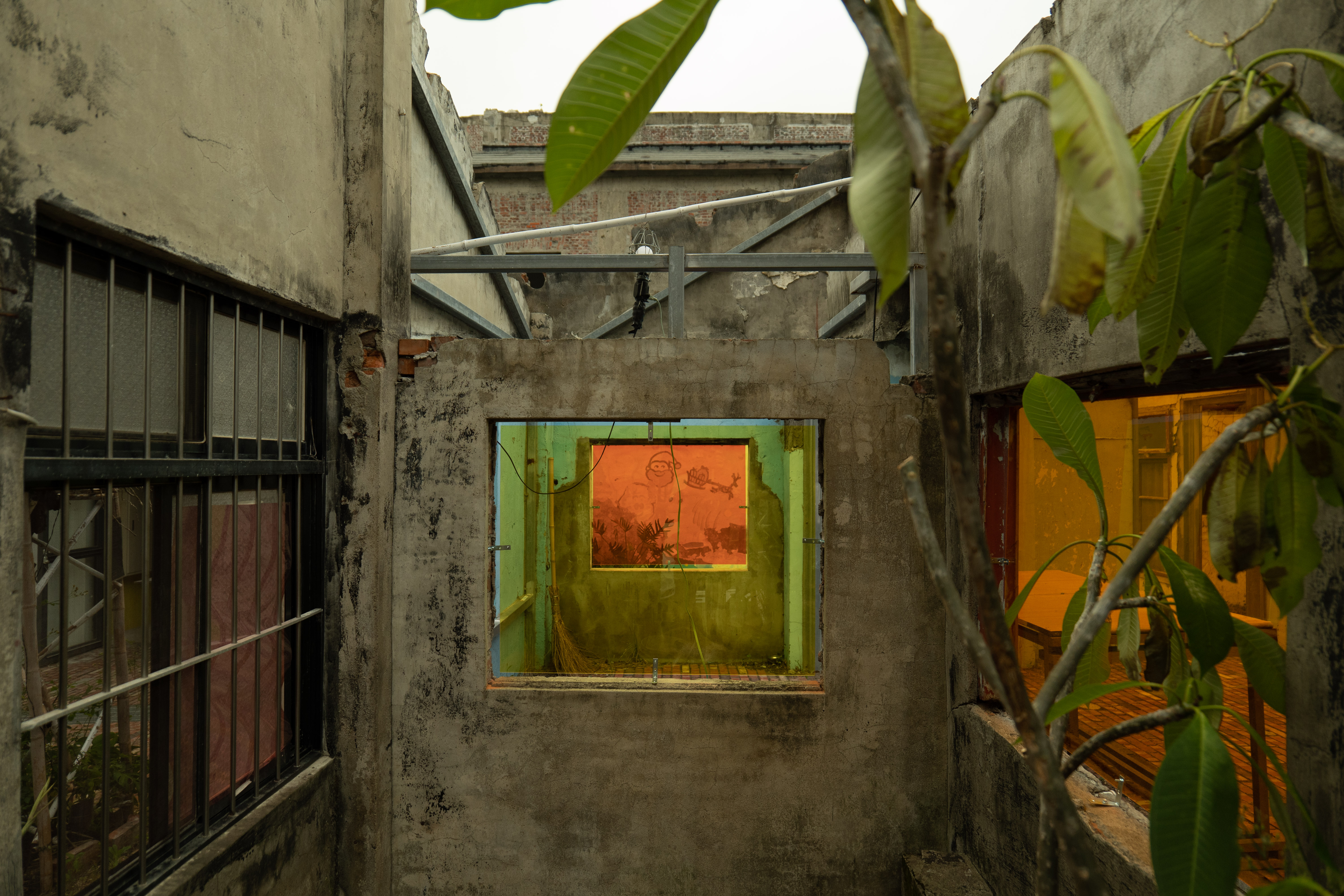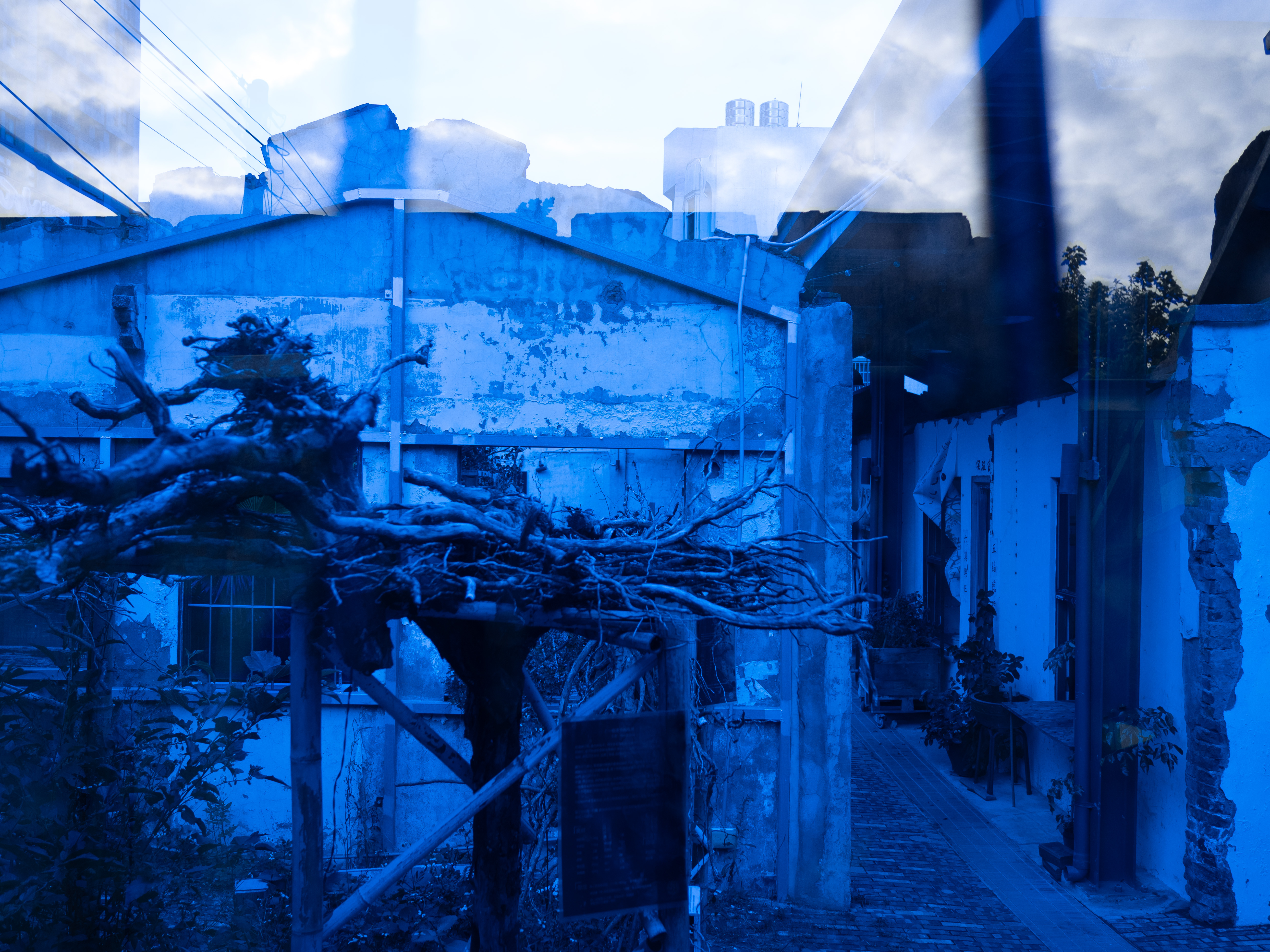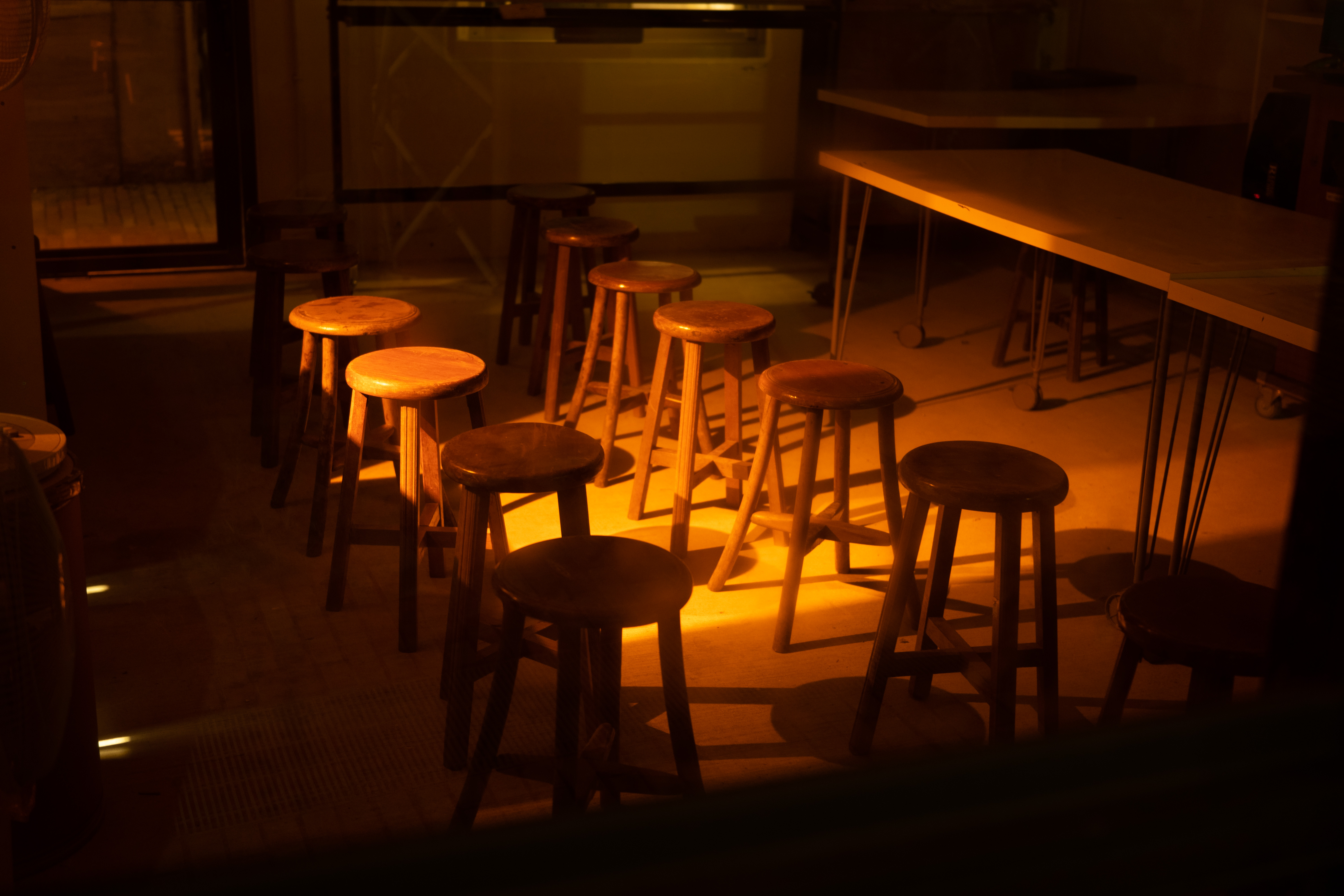


Colored Acrylic Panels, Colored Gel
Installation view in the vicinity of the Hsinchu branch of the Japanese Navy's Sixth Fuel Factory in Taiwan
The work is conceptualized for and located on the site of the Hsinchu branch of the Japanese Navy's Sixth Fuel Factory (日本海軍第六燃料廠新竹支廠), also known as LiuRan. The factory was established by the Japanese military in Hsinchu, Taiwan in 1943, and is the largest existing World War II military industrial site in Taiwan. Abandoned for many years after the war, it was used as a shelter for many veterans and their families during the Nationalist government's relocation to Taiwan. In recent years, the Graduate Institute of Applied Arts of National Yang Ming Chiao Tung University, with the support of Hsinchu City Bureau of Cultural Affairs, has launched a plan called "Hsinchu Living Museum" to revitalize the historic site. The project is executed under the program's guidance. The installation was shown as part of the 2022 "移動的煙囪 x 進擊的六燃" exhibition.
Utilizing the natural light caused by the absence of a roof (collapsed due to its weak structure), window frames, doorway, existing colored walls, and colored acrylic panels, the installation invites participants to travel between spaces and experience the body movement of the former residents of the space. With the layering and transformative quality of colors, the work invites participants to reflect on the history of the site, which is layered with Japanese colonization, World War II, the Nationalist government's relocation to Taiwan, the era of military dependents' villages, as well as its current function as a community space, and its future as a historical museum.
Walking through the empty door frames and gazing at the overlapping layers of walls, one can witness the complex history of the site: the veterans collected wood from the factory to build wooden furniture, the corrugated iron roofs and reinforced steel frames added later to preserve the buildings, with the factory built by the Japanese in the background. The factory's chimney still stands, now housing frosted bats in its crevices, with new plant life growing on the walls and between tiles. The space is now occupied by the documentation and models of the current preservation project, exhibition cases, a returned chicken coop, and a community fridge. History is layered in this space, with each layer adding its own colors and textures to its existence. The installation create a sensory experience that invites visitors to explore the various angles and interwoven stories of the space, making memories of the present in the LiuRan Factory Site. The site of the installation is planed to be remodeled for a parking lot to host museum visitor for the interior of the factory.








